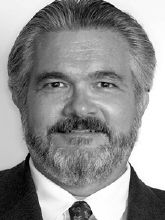New computer applications for the practice of clinical orthodontics - long a recurring theme in the pages of this journal - continue to amaze me. Although I jumped on the practice-management bandwagon early on, giving up my beloved pegboard accounting systems shortly after the first orthodontic computer software became available in the late 1980s and '90s, it took many more years before I finally gave in and adopted the programs designed to assist in performing cephalometric analysis, diagnosis, and treatment planning. I still have my tracing box, mechanical pencils, and cephalometric protractor, along with about a quarter-ton of tracing acetate, but these wonderful old tools have been relegated to the curiosity box. I confess to occasionally taking them out of the closet and doing a case workup the old-fashioned way, if for no other reason than mere nostalgia - much like the enjoyment I derive from driving a horse-drawn carriage now and then. In the modern age, though, computerized tracing and analysis have long since replaced the old manual diagnostic workhorses. In fact, given the development of intraoral scanners and virtual models, we don't even need our dental stone casts any longer. They still make excellent paperweights and conversation pieces, but there is no need to use them for orthodontic diagnosis and treatment planning.
Similar articles from the archive:
Further advances in computerized diagnostic technology continue to arrive in our submissions inbox, as illustrated by two articles in the current issue of JCO. If you've been in practice for more than 10 years, you remember using a die saw to cut the teeth off plaster models, then applying baseplate and sticky waxes to reset them in ideal positions, much like a denture setup back in dental school. These diagnostic setups have been a mainstay of our clinical decision-making process since the mid-1900s. The intent was to visualize what was possible with respect to correcting the positions of the teeth in three dimensions, providing us with a good idea of what the final outcome might be. During the computer age of orthodontics, especially once Invisalign became a major factor in contemporary practice, our plaster diagnostic models were replaced by "virtual setups". But whether the setup was physical or virtual, a major drawback was the need to essentially guess at root positions, angulations, and alignments. In many a case, the failure to predict accurate root positions would spoil the desired results. This drawback has recently been overcome, as demonstrated in an article by a multinational team of authors - Robert J. Lee, John Pham, Andre Weissheimer, and Hongsheng Tong - on "Generating an Ideal Virtual Setup with Three-Dimensional Crowns and Roots". The authors present a technique that "allows the monitoring of root positions at any stage of orthodontic treatment by combining a cone-beam computed tomography scan with either an intraoral or extraoral digital scan of the crowns", so that the clinician can evaluate and modify both crown and root positions for construction of an ideal 3D setup. The computer technology described here is relatively advanced, yet fully applicable to any orthodontic practice.
Another innovative use of computer-based technology in prognostic treatment planning is presented by Meghna Vandekar, Dhaval Fadia, Nikhilesh R. Vaid, and Viraj Doshi, in an article entitled "Rapid Prototyping as an Adjunct for Autotransplantation of Impacted Teeth in the Esthetic Zone". While the value of autotransplantation has long been recognized by the specialty, its application in day-to-day practice has been limited. The main reason is that, until now, the process of planning the dimensions of the recipient site for the autotransplantation has been pretty much a matter of estimation. Dr. Vandekar and colleagues have nicely resolved this issue with the use of 3D printing. A rapid prototype, generated from a CBCT scan of the tooth to be transplanted, allows the surgeon to literally hold a model of the tooth in his or her hand while making whatever measurements are needed for surgical preparation of the recipient site. Creative and remarkable, this technique may well open the door to a more widespread employment of autotransplantation. I'm sure even more amazing advances in computer technology lie ahead - just keep your eye on these pages.
RGK
AAOF McNamara Award
The AAO Foundation recently announced the establishment of a James A. McNamara Orthodontic Faculty Development Fellowship Award in honor of the contributions and career of Dr. Jim McNamara, a longtime JCO Contributing Editor and author. Funding of the award, which will be limited to junior faculty members, was made possible by generous contributions from four leading orthodontic companies: Specialty Appliances, AOA Laboratory, Reliance Orthodontic Products, and Great Lakes Orthodontics. As Dr. Sunil Kapila, who worked with Dr. McNamara for 11 years as chair of the Department of Orthodontics and Pediatric Dentistry at the University of Michigan, noted, "He has made exceptional contributions to the department and the profession and earned a lot of following for the impact his research has made, particularly in a better understanding of treatment outcomes with specific protocols." JCO's recent two-part interview of Dr. McNamara (September-October 2014) was a summation of his life's work in the field of dentofacial orthopedics. It gives us great pride to recognize the establishment of this prestigious award, as well as to thank those responsible for its inception.


